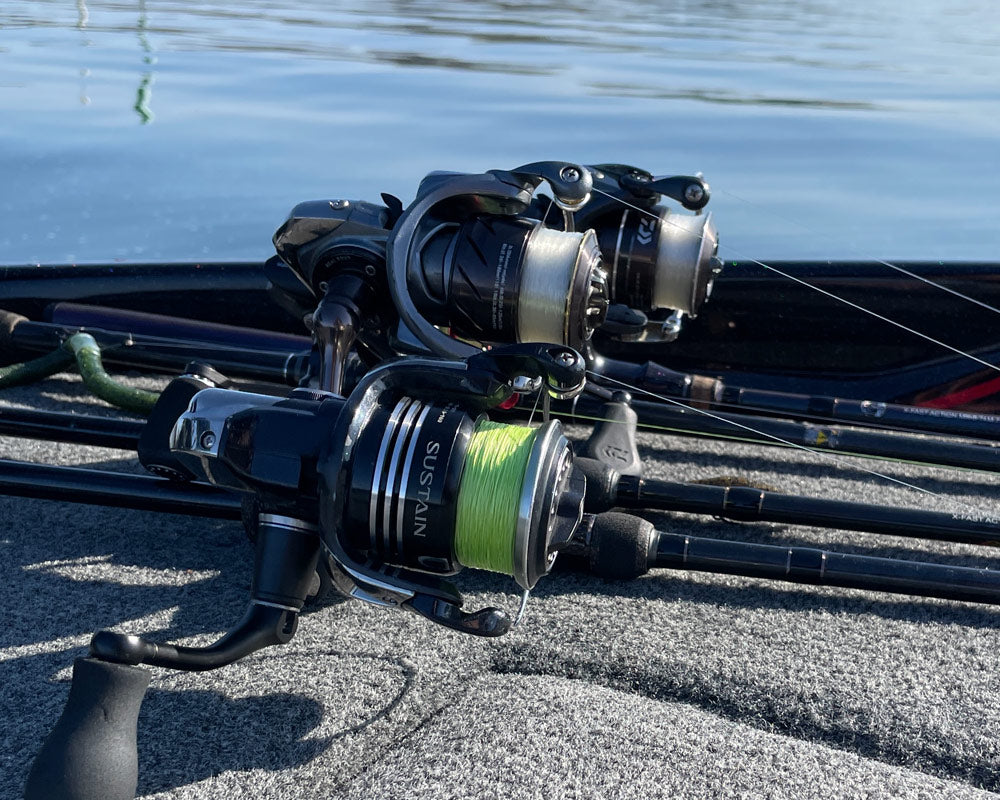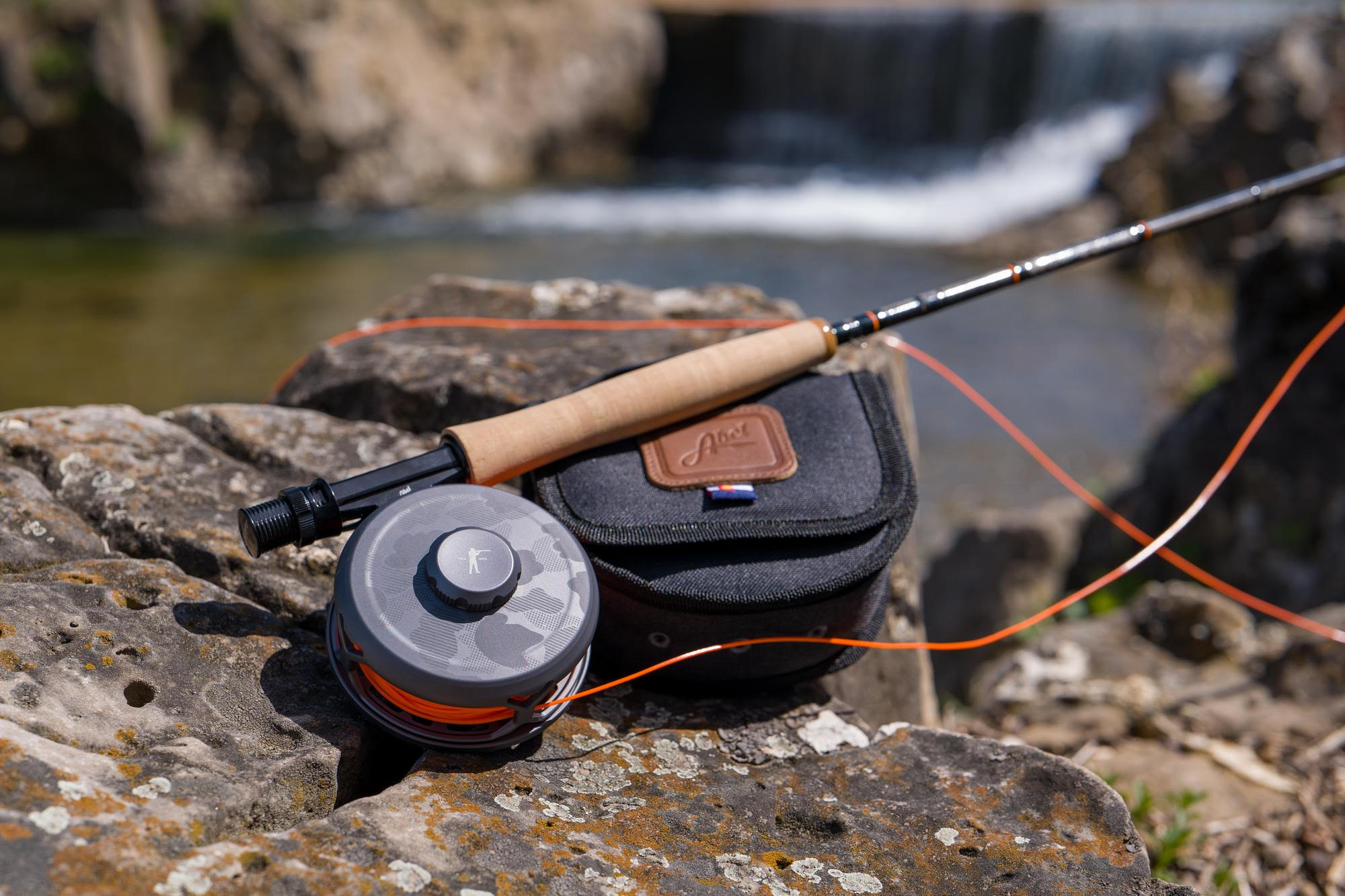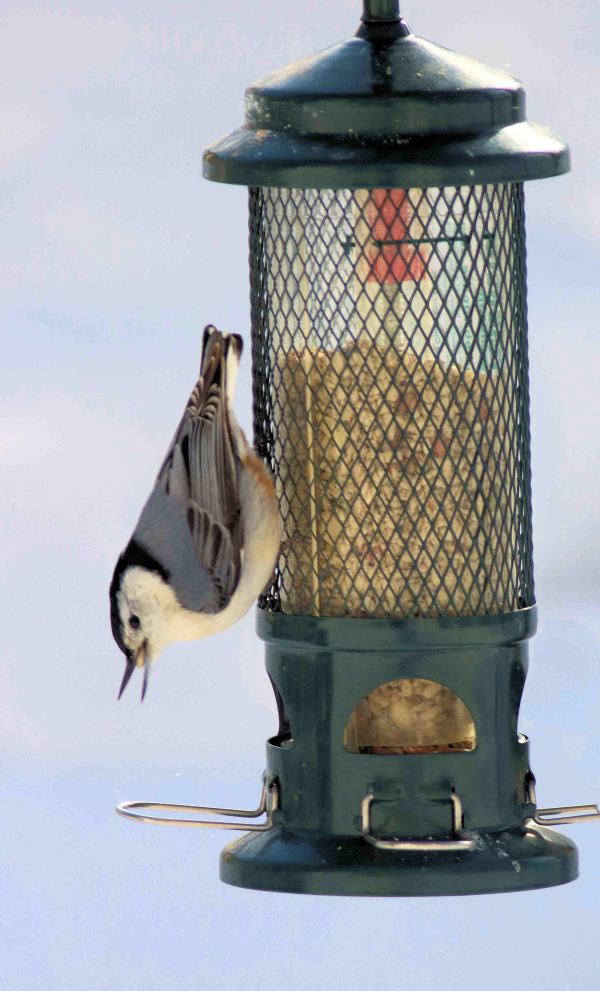Don’t Let Twisted Line Mess Up Your Fishing
Line twist can be a common challenge for anglers using spinning gear. Twisting line can be caused by several factors including the reel itself, lures used, operator error, and more. No matter the reason, line twist can be frustrating, but thankfully, there are several ways to combat the issue.
Listed below are some common topics with line twist and what you can do to combat it and have a hassle-free day on the water.

It starts with spooling
One of the best ways to combat line twist is to get your reels spooled correctly in the first place. There are many ways to get line onto a reel, but one of the most important things is to spool your reel with enough tension so that the line is tight, as loose line can cause problems down the road. This can be done in several ways including with the help of a friend and the tried-and-true method of inserting a pencil into the spool or purchasing accessories that allow anglers to spool while alone. You can also spool line onto your reel while your spool is inside of a box or hotel ice bucket. These methods work and will ensure that the line goes onto the spool correctly and with enough tension.
Braided lines, by nature, are limp and do not cause as many issues as they do not have as much memory as fluorocarbon or monofilament lines. While many anglers have adapted the braid to fluorocarbon setup on spinning gear, Bassmaster Elite Series pro-Mark Menendez still opts for straight fluorocarbon line for many finesse techniques, and he stresses that spooling properly is critical. Once Menendez spools his line, or even after using it for a while, he uses a simple old trick to let his line untwist.
“Spooling properly is always one of the most important steps, and I will spool my reel up to about an eighth of an inch from the top of the spool,” he says. “This isn’t too filled where the line will come off too quickly and is still filled up enough to get the best performance. Then, as I’m idling out of a marina, I’ll flip my bail and let the line go out about 70 yards behind the boat. This lets all of your line untwist and get spooled back onto your reel tightly and perfectly because of the resistance from the water.”
Two ways to remove line twist
Another common issue, especially after the line has been spooled onto the reel and has not been used in some time, is the issue of coiling or line memory. This can happen with both spinning and baitcasting reels. You can stretch your line slightly to get the kinks out if it’s been a while since your last outing.
Create a loop at the end of your line, attach it to a stationary object such as a trailer hitch, and walk back at least the length of a very long cast. While using your rod to create tension, keep the rod bent and walk back towards the object while reeling. This will get much of the line memory out and you can reel the line back on your reel tightly. It will fill the reel correctly and extend the useful life of your fishing line.

The line you add to your reel can also factor into what is causing the line twist. Fluorocarbon lines vary based on the manufacturer, and the properties, even among the same brand, can be very different. Some lines are more limp and manageable, making them better suited for finesse fishing tactics on spinning tackle. Seaguar formulated BasiX to be soft, supple, and easy-casting. While it’s suitable for baitcasting and spinning reels, it’s ideal for spinning gear, where line twists are often more of an issue. Another excellent choice for spinning reels is InvizX, a line developed to have low memory with a soft and supple feel.

Minimizing line twist
Some lures and rigs are more likely to twist your line, and one fishing technique that creates the most twist is the drop-shot rig. With the hook connected directly to the line, each movement of the soft plastic bait tends to twirl and twist and thus creates problems with your line. Some twists are inevitable even when the bait is falling to the bottom. Menendez has a simple solution.

Seaguar Pro Staffer Mark Menendez recommends using a small swivel to minimize line twist
“I use a small barrel swivel above the line and it eliminates all of the line twist from your bait as it is falling,” he said. “I use a small size 8 swivel and connect my main and leader lines to each side with a Palomar knot. Really, any swivel will do here; the biggest key is to have one that won’t be too small, where you reel it into your guides. This simple method eliminates virtually all line twists that are caused by your drop-shot rig or other baits that twist and turn when you reel them back to you.”
Another often-overlooked cause of line twist is rigging your lure incorrectly. Even a slight bend in your soft plastic bait can curl during the retrieve and lead to line twist after fishing and retrieving your bait. In addition to making your bait look more natural, rigging it perfectly straight will also help to slow down line twist.
One more cause of the line twist on the spinning gear is the bail mechanism on the reel. When you engage the reel and start to turn the handle, the bail will flip over, but this creates a slight twist in your line. Over a day of fishing, these small twists can start bigger twists in the line and cause a more significant problem. The simple solution is to flip the bail over with your hand and help prevent the hassle of your line twisting.
Nobody likes line twist and the good news is that much of it is preventable. By following these tricks, line twist can be a thing of the past and you can spend your time on the water fishing instead of worrying about your fishing line.
About Seaguar Fluorocarbon Fishing Lines
As the inventor of fluorocarbon fishing lines in 1971, Seaguar has played a prominent role in the advancement of technologies to improve the performance of lines and leader material for both fresh and saltwater anglers. Seaguar is the only manufacturer of fluorocarbon fishing lines that produces its own resins and controls the manufacturing process from start to finished product. Today, Seaguar is the #1 brand of fluorocarbon lines and offers a full spectrum of premium fluoro mainlines.
Seaguar Tatsu Fluorocarbon mainline is available from 4 to 25-lb test on 200 and 1,000-yard spools.
Seaguar AbrazX Fluorocarbon mainline is available from 4 to 25-lb test on 200 and 1,000-yard spools.
Seaguar InvizX Fluorocarbon mainline is available from 4 to 25-lb test on 200, 600, and 1,000-yard spools.
Seaguar Red Label Fluorocarbon mainline is available from 4 to 20-lb test on 200 and 1,000-yard spools.
Seaguar BasiX Fluorocarbon mainline is available from 4 to 20-lb test on 200-yard spools.









